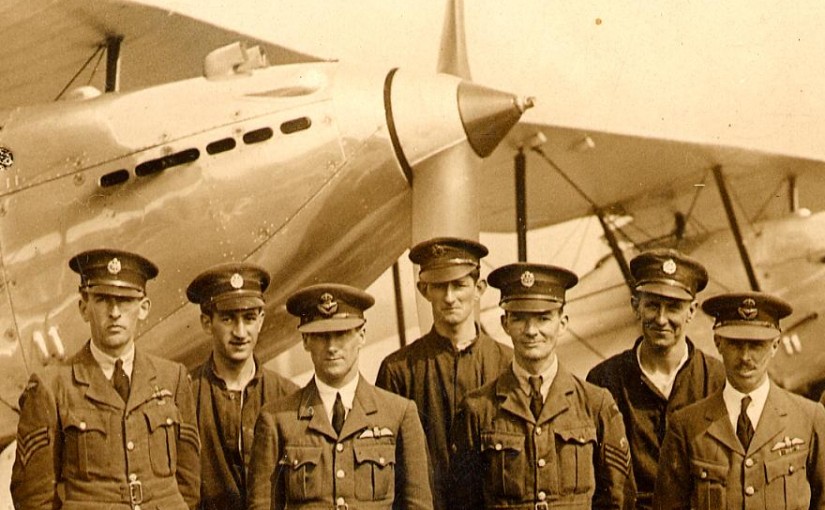The Phillips Family of Boatbuilders
The story of the Phillips family of boat builders started well before the turn of the 19th. Century. John Phillips was building boats at the Rock Channel well before 1886 because in 1886 he indentured his son Herbert, who left school at the age of twelve, as an apprentice in the business on the first day of that year. The original document, part of which is shown here, states that John Phillips “Shall instruct his apprentice in the art of Shipwrighting and Boatbuilding” and “Finding unto the said apprentice sufficient meat, drink, lodgings and all other necessaries during the said term.”
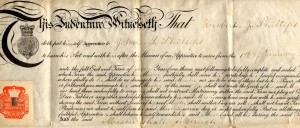

John taught his son Herbert well and the firm prospered. They built traditional clinker vessels of local grown elm on oak with copper fastenings. Every part fashioned by hand. These were vessels built to last, fifty years was life expectancy.
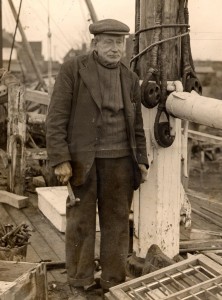
Rye had been a shipbuilding community since the days of the Conqueror. “A fine large ship from Rye” is one of the earliest written mentions of the town. During the heyday of the Cinque Ports, when the five ports and two Ancient Towns formed the King’s navy, ships built in Rye were an important factor in protecting the country from foreign invaders.
Clipper Schooners were built in Rye shipyards and as late as 1852, a year after the railway had reached the town, the “Marion Lagury” was launched from a Rye yard. Large vessels, up to 100′, were still being produced here right up to the beginning of the First World War.
Herbert Phillips, ‘Herbie’ as he was known to his many friends in Rye, was a quick learner. He soon mastered his trade and went to work in yards on the Thames to gain experience, returning to Rock Channel to carry on the business that his grandfather had established in the days when Watchbell Street and Mermaid Street were the homes of sea captains, shipwrights and others who earned their money from the sea. There was a continuous coming and going of ships to the Port and barges carried cargos up the Rother to Newenden and Bodiam.
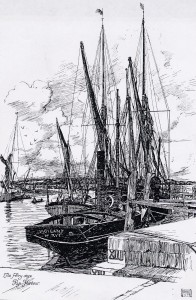
At one time Herbert had fifty fishing smacks on his books which he cared for and repaired. They were based from Brighton to Dover. These jobs were done as a secondary venture to building boats, which was an ongoing job, as one left the slip another keel was laid.
Herbert Phillips was married to Elizabeth, they had two sons and a daughter. The eldest son, Herbert, sadly died just before the Second War.
Herbert Snr. survived the war and worked on. He enjoyed his Diamond Wedding in 1958 and completed 75 years of shipbuilding, He died in 1961 at the age of 87.
The business was carried on by son Harry, who had been taught by his father the secrets of building the fine clinker vessels that had been the hallmark of the Phillips Yard for 100 years.
Like Herbert, Harry was an apprentice to his father. He got a little more than his keep though, taking home a princely one shilling and sixpence a week.
He was a good boat builder but at the end of the First World War he wanted a bit of excitement. He joined the Royal Air Force and flew in the famous Hawker Hart fighters.
Harry returned to boat building when his six year term with the R.A.F. was completed and put all his efforts into helping his father at the Phillips Yard.
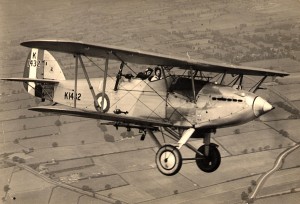

When the Second War broke out the Yard was involved with naval work. Labour was scarce so sister Winifred came in to help out. Harry experienced a very narrow escape when he was navigating a motor launch repaired by the Phillips to Dover in 1944. A flying bomb shot down by British fighters, crashed in the sea just a few feet away.
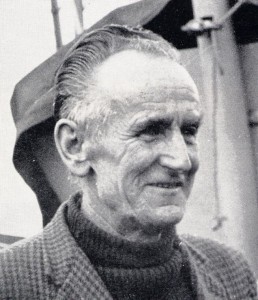
After the War the Phillips Yard returned to normal, building, converting and repairing fishing boats. By the 1950’s a trade in pleasure cruising began to emerge. Harry’s son Derek joined the firm and for a while three generations were involved. Grandfather Herbert’s death in 1961 left Harry and Derek to carry on the legacy and they did it in style. For a while the old clinker building style survived and prospered, both for fishing vessels and pleasure cruisers. One fine example from the Phillip’s slipway was the John Dory. Completed in just six months the four berth cabin cruiser was built to last with a guaranteed life of fifty years.
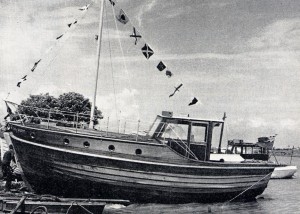
The 28′ Catch Rig was powered by a 56 H.P. Perkins Pike Diesel and had a capability to cruise at nine knots and run for 50 hours at full throttle. The John Dorey sailed to Boulogne on its proving trials.
As time went by other new forms of building boats were becoming more popular. Ferro concrete and fibre glass hulls were cheaper and easier to produce but the quality of the traditional clinker built boats made at Phillips’ kept the order book full for several more years.
By the time of Harry’s death in the 1980’s the yard had been forced to turn towards new methods. Derek took on the task of keeping as much of the traditional work as possible but introducing the new mediums as demand for them became more intense.
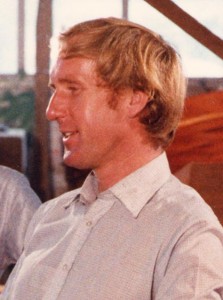
Clinker Built boats are still produced at the Yard when required but there has been a move to fitting out hulls manufactured elsewhere and of the repairing, maintaining and lying up pleasure boats for the winter months.
Derek has done a remarkable job through some difficult times to continue the traditional family business.
Rye has lived through many tough years since the day that Derek’s Great Great Grandfather established the firm in Queen Victoria’s time. The Phillips Boatbuilding Family have been a bridge with each end lodged in two centuries, completely spanning another. There are few other businesses in this town that can equal this proud achievement.
